Moroccan decor style is a fashionable way to add form, function, and flair to your living space. Moroccan style decor is famed for its lanterns, definitive patterns, and hand-crafted embellishments, but there’s so much more to it than simply the vibrant and inviting appearance.
The Moroccan style decor is recognized for its architectural attention to detail. You will find it has gorgeous archways and arched doorways at every turn. However, if you live in a small city apartment or a rental, it may not be an option. There is a lot you can do in terms of decor to make your home feel as warm and inviting as a true Moroccan interior.
Interested in learning more about how to create and decorate a Moroccan-inspired space? These designer tips can assist you in bringing Morocco right to your doorstep.
13 Intrinsic Features of Moroccan Style Decor
Arches, domes, courtyards, and beautiful tile work are all frequent features of Moorish architecture, and they’re all well represented in modern homes. Here are some key features you can add to your home to create Moroccan style decor.
Use Very Bold Colors
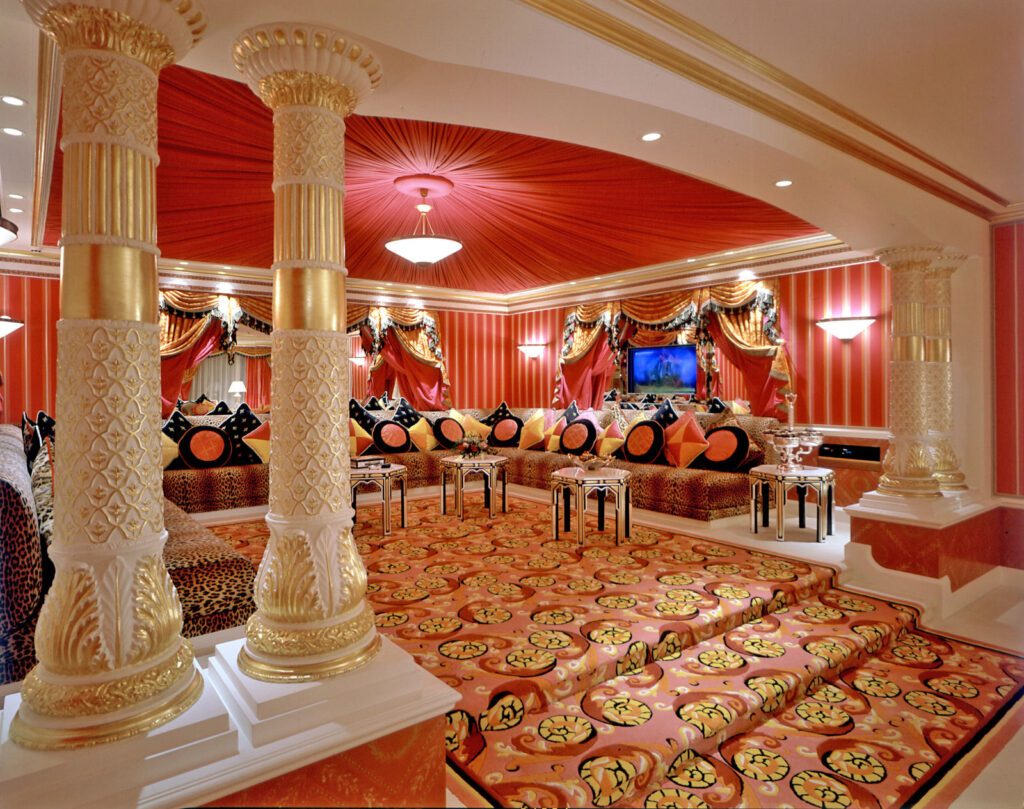
The first thing to remember if you want to convey the feel of authentic Moroccan decor into your own house is to add very bold colors. Every room in this style decor is filled with a variety of vibrant colors that bring the house to life. Color schemes that evoke both the desert and the sea are common, with colors like blue, green, and orange dominating the interiors.
The Moroccan combines strong colors like fuchsia, royal blue, deep purple, and vibrant red. You can also incorporate soothing desert neutrals like sand, taupe, beige, and shades of white.
The Moroccan style is also known for its bold accent walls. Begin with your wall colors, and then incorporate them into your linens and accessories, as well as some accents.
It is About Textures
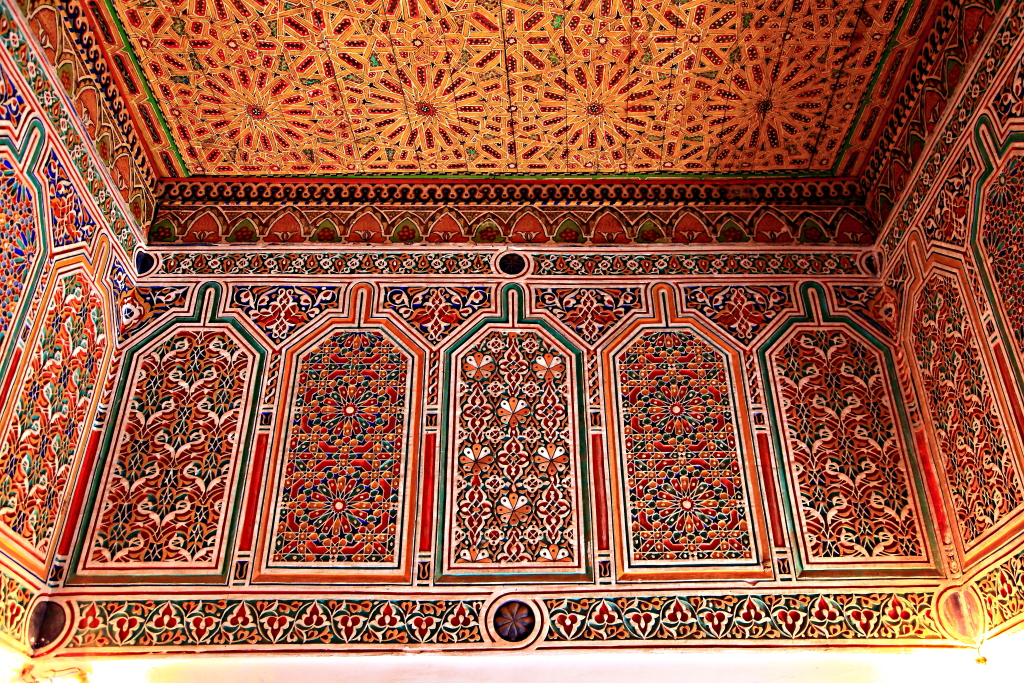
Moroccan design emphasizes texture. Homes have rough stucco walls, silken tapestries, and rugs, to name a few textures. Rugs are generally made of woven silk and wool Asian motifs. They also come in a variety of sizes, from whole room rugs to little prayer rugs. The Moroccan style décor has a dense layer of contrasting elements.
Use Modest Lighting

In Moroccan style, the less light that lamps emit the better. You’re looking for soft, romantic lighting that’s both wonderful and luminous. As a result, their lighting comprises of warmer fixtures with only a glint of light. You will come across lamps and candles with complex designs or gold finishes. You’ll want to incorporate these beautiful details into your Moroccan interiors. Add gold lighting to the space to give it a warm glow while also adding a little sparkle.
Utilize Lavish Textiles
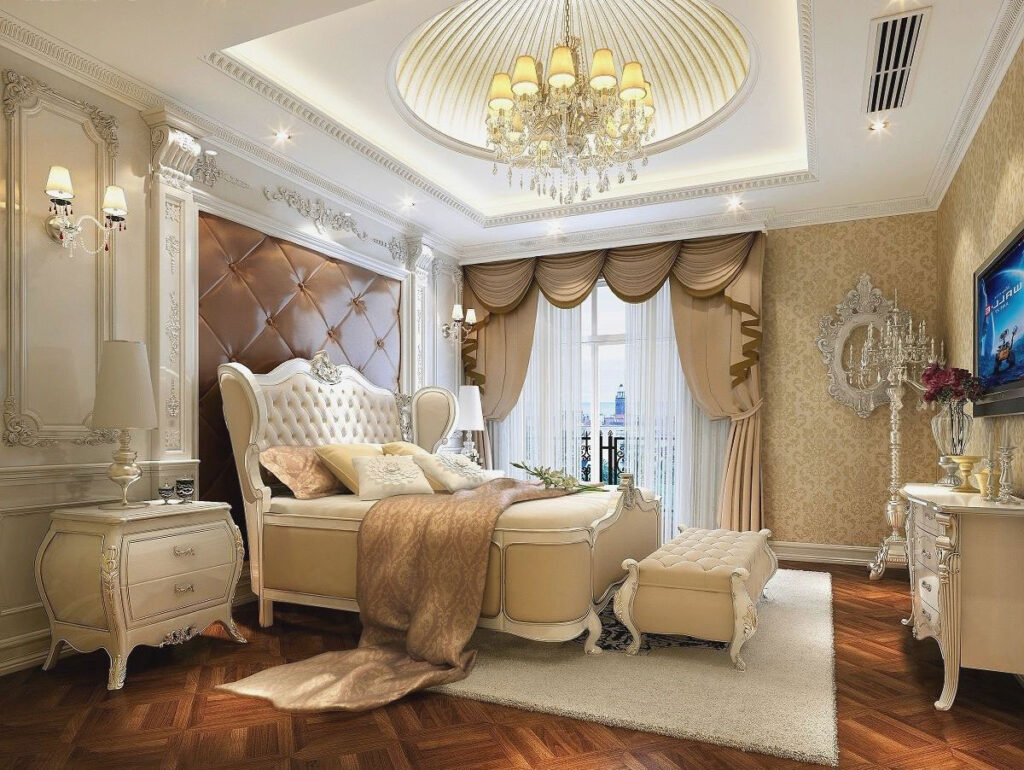
The love of rich textiles and fabric is also a big part of Moroccan style decor. This interior style uses fabrics with an abundance of colors, texture, and little complex detailing that feels beautiful. They are embroidered with an excess of colors, texture, and small exquisite decoration. It’s all about drawing attention to every detail of the space, and even the windows.
You can drape thick cords over loose textiles to give another layer of texture. To enhance the attractiveness of having these textiles exhibited throughout, pair them with vibrant cushions and accent pieces.
ProTip Takeaway: Consider gold if you’re ever unsure what color fabrics work best. In Middle Eastern culture, gold is a powerful color, thus displaying it is always a good choice.
Use Floor Rugs
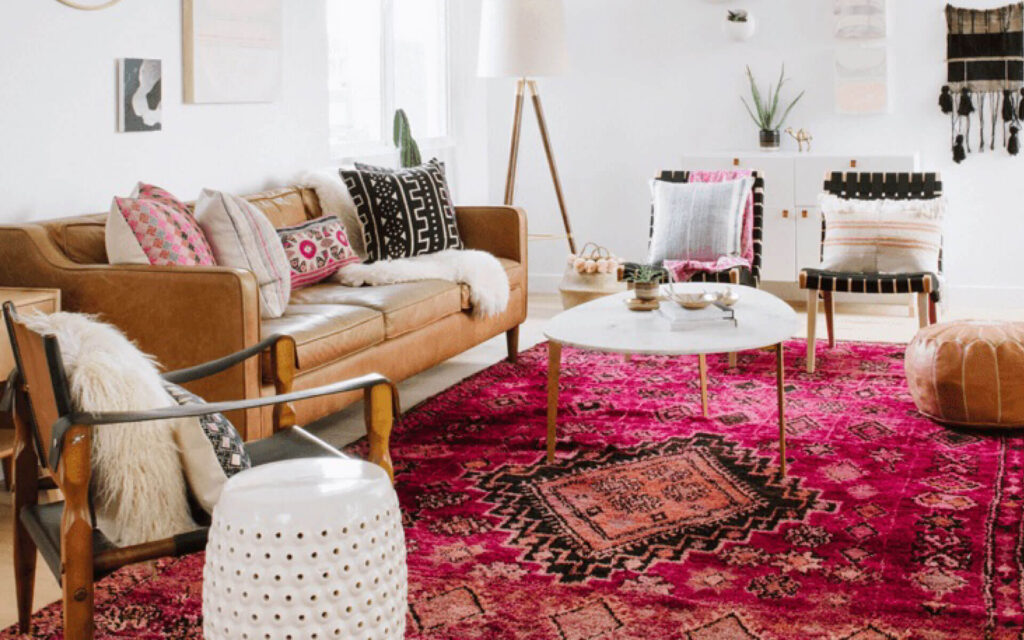
Rugs are popular in the Middle East because they provide a lot of color, texture, and comfort. Dark wood is also fashionable and you should add some color to the floor with a colorful rug.
If you have space for only one rug, try layering two or three for a stunning look that brings the room together. Also, consider using floor cushions as a simple display that makes the space comfortable and unique.
Beautiful Lanterns
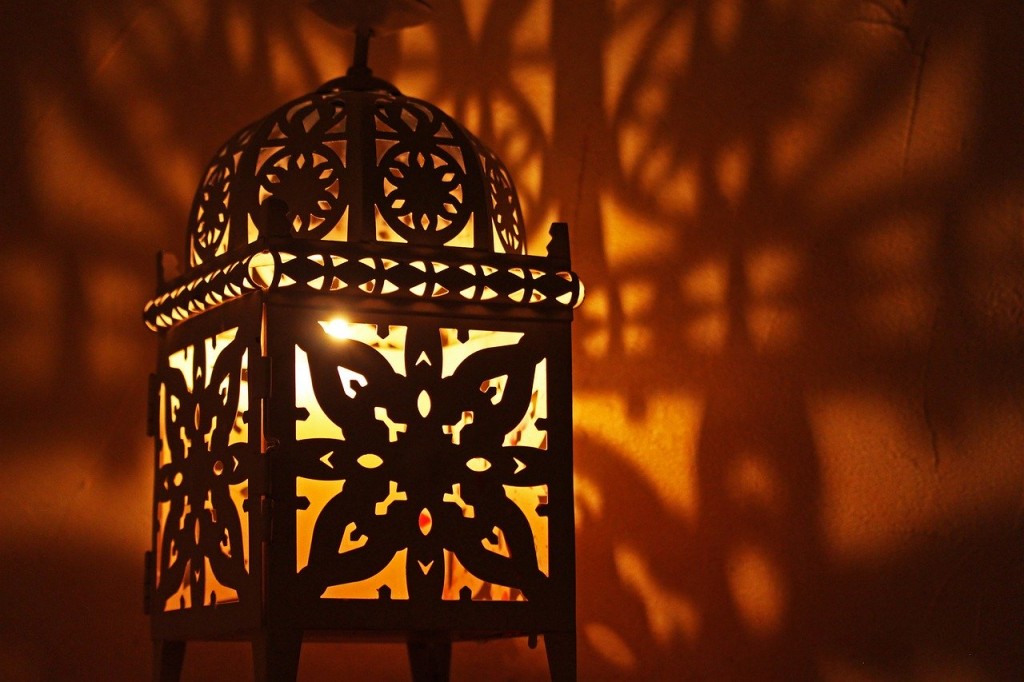
Lanterns are probably one of the most distinctive elements of Moroccan style, and they are placed in almost every room. They’d look great in a dining room or a living room. Hanging a few unequal lighting lamps above your dining table, for example, can give the this decor style a more modern edge.
Tiles
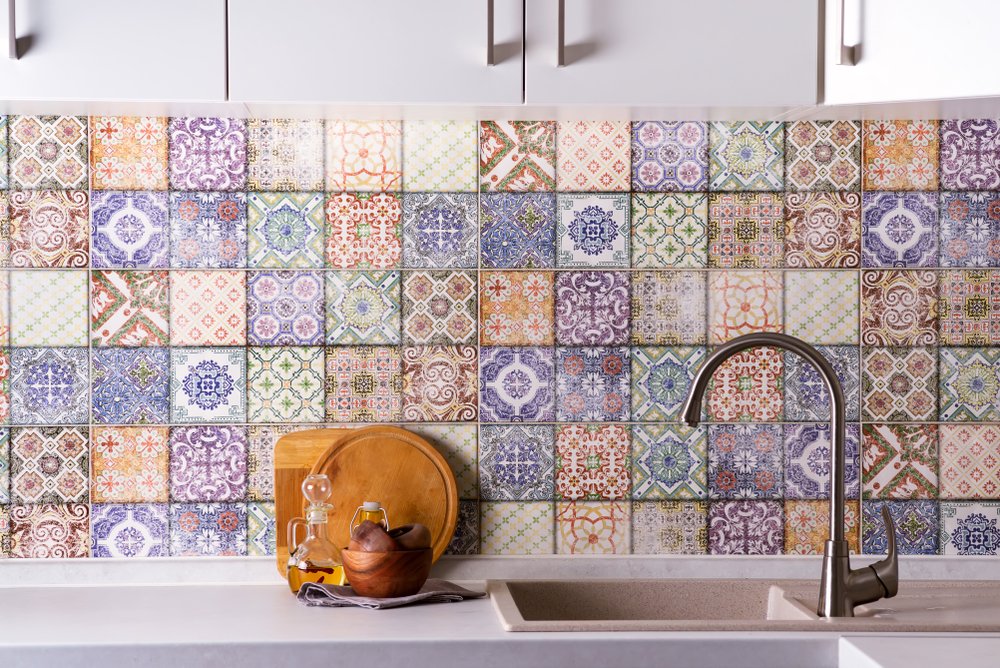
Geometric tiles can be used to make gorgeous wall art. They can also be used as a focal point of your main living room wall to really bring out that Moroccan decor.
It also makes extensive use of ceramic and mosaic tile. These colorfully patterned tiles are used to frame doors and windows. They are also used for tabletops and accent items like mirrors, picture frames, and wall art.
Tiles can be impactful and authentic and as a result tiling in strong, contrasting hues is very popular in the Middle East. The kitchen and the bathroom are two rooms where tiles are always a good choice. For a striking contrast that works in the room, use white, beige, blue, or black tiles.
Furniture

Moroccan furniture consists of a mix of soft overstuffed upholstered items and beautifully carved wooden pieces. Tables are usually topped with huge brass or copper trays or inlaid tile motifs.
Rugged carved wood chests and tables are also very popular in Moroccan decor. To create contrast; the inlay is usually bone, whereas other furniture lays are frequently Mother of Pearl motifs.
Reclining couches with fabric drapes and colorful pillows are examples of upholstered furniture. Ottomans with excessive padding are usually used as a complement to chairs and couches.
Low Lying Furniture

Reduce the height of your furniture pieces to add a touch of the Middle East to your decor. Replace tall, dramatic decorative things with smaller pieces that are still bold and enchanting while being closer to the ground. To make the place feel as authentic as feasible, use upholstery, wood, and even pearl.
Accessories

Moroccan accent pieces also reflect Islamic and Asian influences. Metals such as brass and copper are typically used to make lamps that are hung from the ceiling. Mirrors with an Islamic design, frequently framed in metal or wood, are another popular Moroccan feature. Brightly colored pottery, which may be hung on the wall, used as serving pots, or used as decorative lamps, is very popular.
A ceramic tajine (or tagine), which is a ceramic cooking vessel, is usually covered with beautifully woven designs. This is a pleasant decoration for a kitchen or a dining room.
Doors and Structural Elements

Stucco houses in Morocco are built with wooden beams and supports. There are very few right angles. The doors and windows are arched or shaped in this traditional Islamic keyhole pattern. White-washed houses also shine in the brilliant Saharan sunlight.
ProTip Takeaway: Horseshoe arches are identified by a huge round arch atop a straighter, narrower doorway and are highly frequent in Moroccan design. In fact, they are also known as Moorish arches (or keyhole arches).
Canopy Display
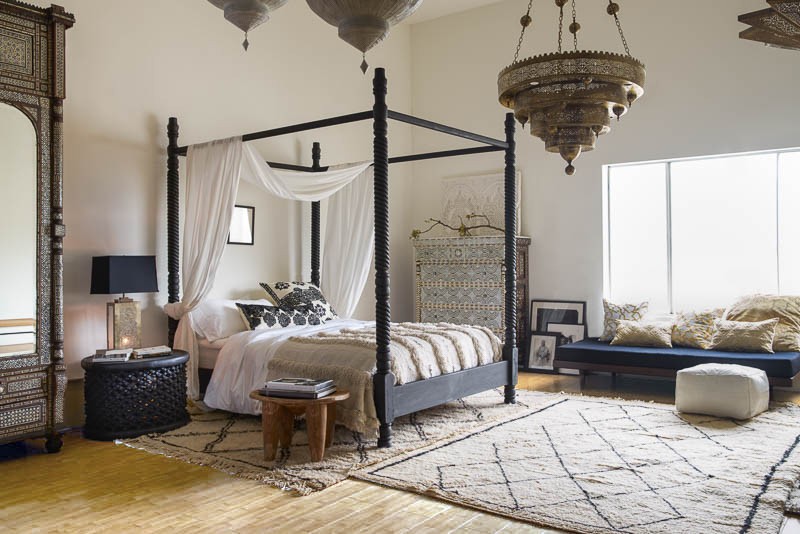
Moroccan interior style is known for an eye-catching display. Adding a canopy, mosquito netting, or a display that resembles a veil across your bed will also do this. When using a canopy, the objective is to create a mystical atmosphere. For added texture and color, the canopy adds another layer of decor. Take it a step further and make your canopy stand out from the rest of the decor.
Large Mirrors
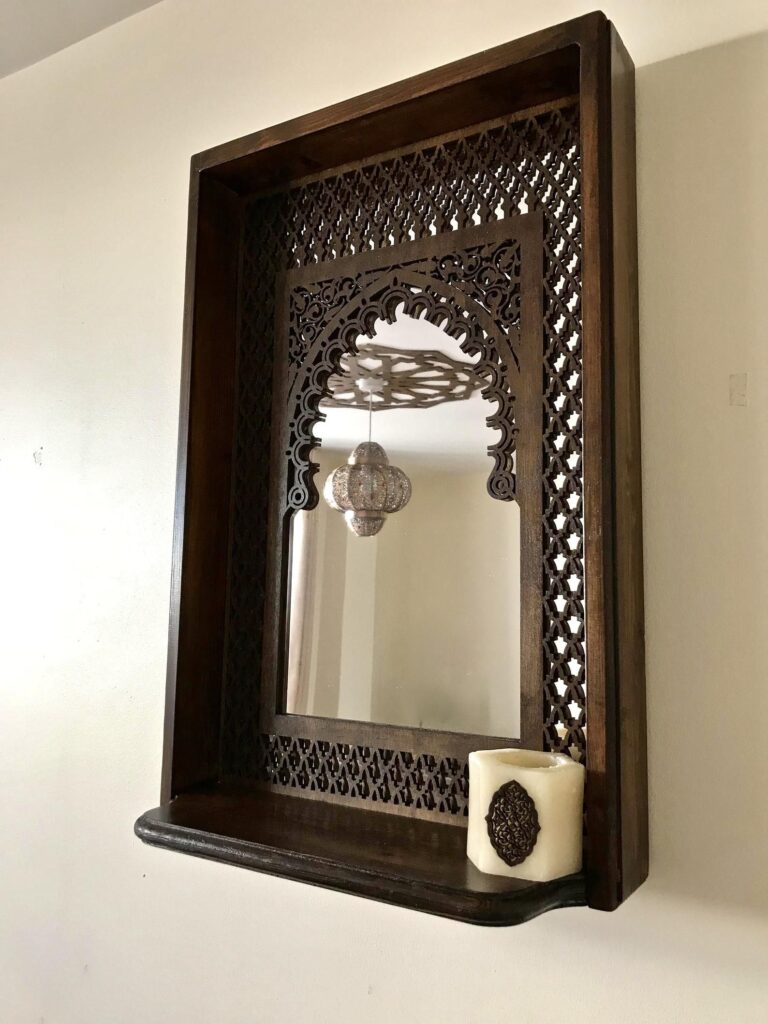
This style decor is also heavily reliant on mirrors. They are a great way to add light to a home while also making the space appear larger. The larger the mirrors the better. You’ll want several large, embroidered mirrors spread about your home to give it that ethereal, classic feel. While the mirrors make a grand impression on your style decor, there should be a clear, consistent style in the area.







